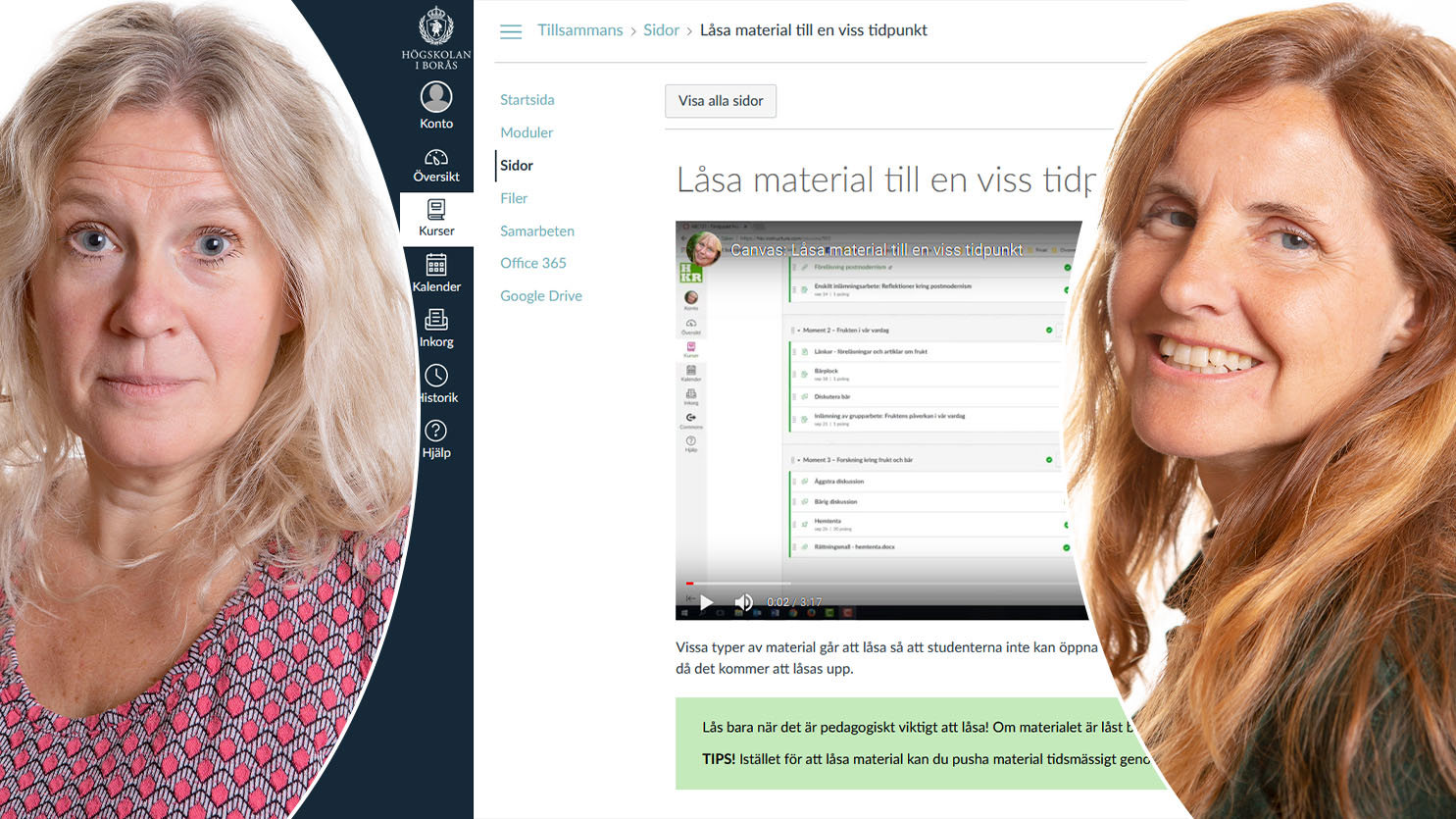Canvas simplifies and improves – first impressions
2021-02-24

The project began in October 2020 under the leadership of Hanna Markusson, Director of the Academic Affairs Office. Involved teachers have since participated in workshops and exchanges with other higher education institutions to prepare for the start of the term.
“I have experienced the transition as smooth and it has worked well. I would especially like to highlight the project group's work, which has been very clear, and through which we have been offered both training and support in our use of Canvas. This structured approach has made me feel confident throughout the process,” says Gisela Bohlin, Lecturer at the Department of Pre-School and School Teacher Education.
Now it is up to the teachers to consider their experiences for the project group and transfer successful course structures to future courses. They also highlight some challenges.
“For me, the platform change has raised concerns about causing problems for the students. Have I chosen the right settings? Which files are visible, and are the dates and grading scales correct? I have tried to make it easier for me and the students by hiding many functions and keeping it clean and simple,” Gisela Bohlin continued.
Strengthens contact with students
After just under a month with the new learning platform, Emma Almingefeldt, Lecturer at the Department of Pre-School and School Teacher Education, sees great potential in Canvas.
“The biggest advantage is that we can follow GDPR better. The right student gets the right feedback because we no longer need to download each assignment and then upload the assessments. This minimises the risk of information falling into the wrong hands.”
On the new platform, it is possible to open the files inside the Canvas interface. There, teachers can comment, assess, and grade the assignments in the same window.
The students also seem satisfied with the transition to the new learning platform.
“The students are very positive. Among those who have experience of both PING PONG and Canvas, user-friendliness is highlighted as one of the biggest advantages,” said Emma Almingefeldt.
Relationships with the students have also improved. Since Canvas has mobile phone applications, Canvas Student and Canvas Teacher, it is possible to set up your own notifications.
“Email has become a difficult channel to reach students through. That is why it is so good that the inbox is an integral part of Canvas, with everything gathered in one place. Students can respond to their messages both on the learning platform and via their linked email accounts. All messages are collected in Canvas, which makes it easy to go back and review the conversation,” Emma Almingefeldt explained.
What are your expectations for your future use of Canvas?
“Something I look forward to is getting access to the tool Canvas Studio, so that I can record and edit video reviews for my students directly on the platform. I hope to be able to do this in a more integrated way in the future,” said Gisela Bohlin.
“I expect to have more time for other work because Canvas makes the technical part of the work so much more efficient. A little thing like being able to put my courses in the order I prefer, and many other features, can, in the long run give me more time to develop and improve my courses,” added Emma Almingefeldt.
Facts
In parallel with the start of the first courses using Canvas, two support courses have started:
Students in Canvas (only in Swedish, external link)
Together in Canvas for teachers
It is also possible for teachers to visit the courses as a test student to see what the page looks like for the students.

